- News
- Reviews
- Bikes
- Accessories
- Accessories - misc
- Computer mounts
- Bags
- Bar ends
- Bike bags & cases
- Bottle cages
- Bottles
- Cameras
- Car racks
- Child seats
- Computers
- Glasses
- GPS units
- Helmets
- Lights - front
- Lights - rear
- Lights - sets
- Locks
- Mirrors
- Mudguards
- Racks
- Pumps & CO2 inflators
- Puncture kits
- Reflectives
- Smart watches
- Stands and racks
- Trailers
- Clothing
- Components
- Bar tape & grips
- Bottom brackets
- Brake & gear cables
- Brake & STI levers
- Brake pads & spares
- Brakes
- Cassettes & freewheels
- Chains
- Chainsets & chainrings
- Derailleurs - front
- Derailleurs - rear
- Forks
- Gear levers & shifters
- Groupsets
- Handlebars & extensions
- Headsets
- Hubs
- Inner tubes
- Pedals
- Quick releases & skewers
- Saddles
- Seatposts
- Stems
- Wheels
- Tyres
- Health, fitness and nutrition
- Tools and workshop
- Miscellaneous
- Cross country mountain bikes
- Tubeless valves
- Buyers Guides
- Features
- Forum
- Recommends
- Podcast
review
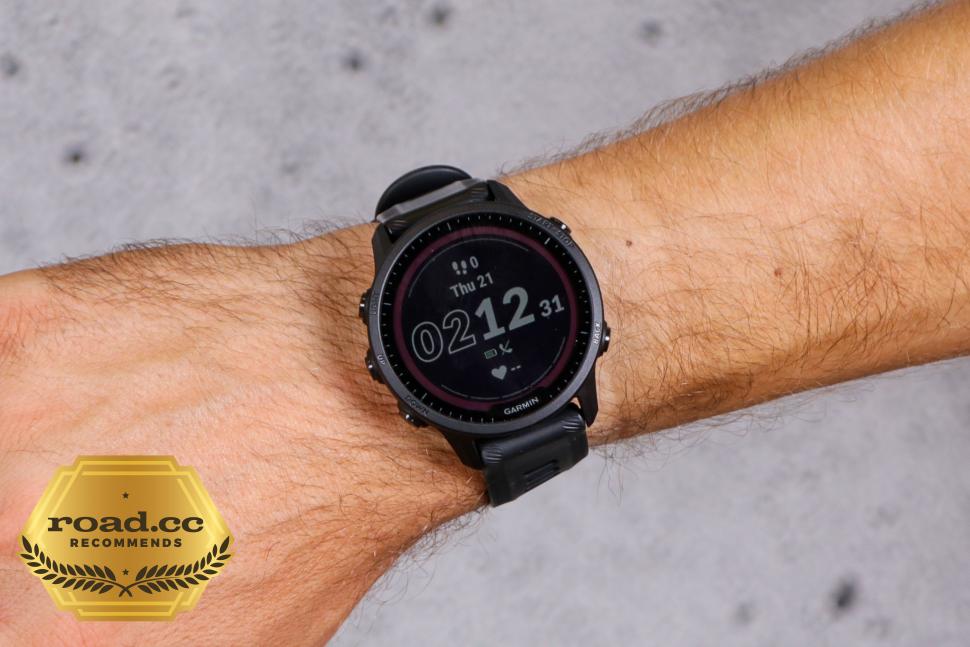 Garmin Forerunner 955 Solar
Garmin Forerunner 955 Solar£549.99
VERDICT:
Extremely powerful multi-sport smartwatch that is highly customisable to suit your needs
Huge degree of customisation possible
User-friendly health data
Excellent multi-band GPS
Improved heart rate sensor
Proprietary charging cable
Weight:
53g
Contact:

This product has been selected to feature in road.cc recommends. That means it's not just scored well, but we think it stands out as special. Go to road.cc recommends
At road.cc every product is thoroughly tested for as long as it takes to get a proper insight into how well it works. Our reviewers are experienced cyclists that we trust to be objective. While we strive to ensure that opinions expressed are backed up by facts, reviews are by their nature an informed opinion, not a definitive verdict. We don't intentionally try to break anything (except locks) but we do try to look for weak points in any design. The overall score is not just an average of the other scores: it reflects both a product's function and value – with value determined by how a product compares with items of similar spec, quality, and price.
What the road.cc scores meanGood scores are more common than bad, because fortunately good products are more common than bad.
- Exceptional
- Excellent
- Very Good
- Good
- Quite good
- Average
- Not so good
- Poor
- Bad
- Appalling
The Garmin Forerunner 955 Solar is an extremely powerful multi-sport smartwatch with huge scope for customisation. The health data is presented in a much more user-friendly format than previously, but whether the benefit of solar is worth the extra cost will depend on how long and sunny your activities are.
The watch is quick to set up – though it possibly helps that I'm used to the Garmin ecosystem. It pairs easily to Garmin Connect, and from there you can set up the basics to get you going. Given the vast array of options, it'll probably take a while to get familiar with what is important to you and customise it to your needs.
Activity tracking
You can track lots of different sports and you get loads of options you can customise, such as different data fields for mountain biking to road cycling. A new (somewhat overdue, in my mind) feature is that you can now amend the data fields for each sport from Garmin Connect and sync it to the device.
I have tested it for a variety of activities including cycling, running, pool and open water swimming, and hiking, and for winter sports on the previous edition.
While the variety of data it can collect may seem overwhelming at first, the data fields are in sub-categories, enabling you to find what is important to you – for example, pace, power, heart rate, speed fields. The defaults for each sport are sensible suggestions too. And you can have lots of screens capturing different types of data, such as totals or averages.
You can add structured workouts or follow the recommended daily workout – it'll give you one specific to running and cycling.
After your session it gives you a training status based on whether the session was helping to improve your fitness, training load and training balance. I wish Garmin would rename the 'Unproductive' status, though – it's quite frustrating after a hard session.
It also gives you a suggested recovery time based on training intensity plus other factors such as sleep, stress and total load.
The default is multi-band GPS which performed really well, the track perfectly matching where I had been. I often run on trails in the woods and near the river, and my previous watch often had me running in the river, whereas the Forerunner had me perfectly on the path at all times.
Screen
The diameter of the watch is 46.5mm, which is a good balance between having a screen big enough to display your desired data and something you'd want to wear all day. Some of the other smartwatches out there, such as the Garmin Fenix 7X, are too large for my liking.
The screen is colour, as you'd expect at this price. This is particularly useful for maps and also makes the summary data pages quick and easy to understand.
The touchscreen is sensitive and works well, responding when required but never unintentionally triggered. It's active when going through the watch settings and reading notifications. I found I used it most for reading notifications without reaching for my phone, and didn't use it too much during exercise.
You can set the touchscreen to be active depending on the sport, so if you'd prefer it off when running but on when cycling, for example, that is no problem.
You can also customise the screen with a range of different watch faces, either with a classic analogue look or a digital display. You get a range of options on the device itself, and loads more on the Connect IQ app.
Navigation
I have used the Garmin for navigation on a lot of rides, trail runs and hiking in unfamiliar areas, including a recent trip to the Alps.
It's easy to load a route whether via Garmin Connect, a direct import to the device or auto-syncing with a route-making platform such as Strava or Komoot.
> GPS cycle route planning made easy – how to plan and follow a bike route
The navigation is good, with arrows showing the directions, and an alert as you are approaching a junction set as default, which is helpful given it's on your wrist. It quickly alerts you if you go off course, too.
While the navigation is good, I'd always prefer a cycling computer as it is easier to see while you are riding. If you don't have a computer and cycling is your main sport, I'd recommend a computer over a watch unless you are very keen for the additional features.
When following a course, it shows you the ClimbPro segments, displaying the profile of significant climbs on the ride (slightly daunting in the Alps!).
It also gives you a profile of the whole ride, with a summary of how much elevation you have done so far and how much is remaining. I found this useful for pacing myself and preparing for how much climbing is left to come, particularly when I hadn't paid attention to the profile of the route beforehand.
There are numerous other navigation features such as 'do course in reverse', points of interest around you and creating a route automatically on the watch. I also like that you can start a course mid-ride.
Connectivity and heart rate
The Forerunner 955 Solar supports ANT+ and Bluetooth sensors, enabling you to connect power meters and heart rate sensors if you prefer an alternative to the wrist-based measurements.
I compared the wrist-based heart rate monitor against my Garmin HRM Pro strap across several rides and found it to be accurate (provided the watch strap is done up tightly). On a three-hour group ride, the Forerunner 955 logged an average of 138bpm with a max of 176bpm, the heart rate strap 137bpm average and a max of 178bpm. On a local chain-gang effort (yes, I got dropped), the Forerunner logged 152bpm with a max of 182bpm, and my heart rate strap 151bpm with a max of 181bpm.
Digging into the data in a bit more detail, it matched the heart rate strap well, recording very similar times in each heart rate zone. It also did a good job when tested while running.
There were still a few times when I didn't trust the data – it was giving a low heart rate reading despite me smashing it up a climb. But it was only like this if I'd forgotten to tighten it before training – to give accurate readings it needs to be tighter than I'd wear it casually.
If you do heart rate zone training then you may want to consider a heart rate strap to be sure you are working in the correct zones (or just be more diligent than me in tightening the strap before training). I tended to use a heart rate strap if I was doing something more intense, whereas for a recovery ride or an easy jog I'd rely on the watch.
If you have one of the advanced Garmin HRM straps (for example, HRM Run, Pro or Pro Plus or other running power accessory) it can use this to calculate running power, which is new to the watch; this was useful for managing efforts on hills and trail runs.
Health monitoring
The Forerunner 955 collects a vast array of data which can be used for monitoring your health. One new feature I like is the 'Morning Report' which gives you a snapshot of your sleep, recovery, heart rate variability and other customisable metrics. This encouraged me to use the health data a bit more than I have on previous watches I have used.
One unexpected consequence of testing the watch was that I was more careful with my alcohol intake; the impact of even a few drinks was visible every time with reduced sleep quality and a lower heart rate variability score.
Another new feature is the 'Training Readiness' metric, which takes data from sleep, training load, heart rate variability, recovery from training and stress to provide you with a readiness score to help you decide whether you are up to that tough interval session. This tied in well with how I was feeling, giving me very low scores after a hard session and a high score when well rested.
The watch also suggests training sessions based on your training load, training readiness and your level of fitness using data collected from previous sessions. I found these to be useful for ensuring a balanced training load, as I am guilty of neglecting certain types of sessions. I found most recommendations to be about the right level of challenging but completable. However, I did find it a bit too harsh after a disrupted night's sleep, suggesting just a short recovery ride when I actually felt fine (and was able to do a five-hour ride).
The watch tracks your sleep, giving you details of time asleep, phases of sleep, a general comment such as 'continuous' or 'poor' and a sleep score out of 100. It did tally with how well I thought I slept, but would struggle if I was reading before I went to sleep or if I was lazing in bed upon waking. It also doesn't track naps, which is a shame as I often have one after a long weekend ride.
To get the most out of the data you need to give the watch time to work – it takes the Forerunner around three weeks of consistent use to establish a personal baseline in the data, and then the trends and data become more useful.
And for the health data you need to be prepared to wear the watch most or all of the time to ensure accurate data is collected. So you'll need to wear it while cycling even if you already have a cycling computer, and to wear it while sleeping, otherwise the quality of the data recorded will be limited.
Battery life and charging
The battery life claimed by Garmin depends on the mode you choose. The most interesting figures are the multi-band GPS; Garmin quotes 20 hours battery life and 22 hours with solar charging assuming three hours per day exposure in 50,000 lux conditions, which is a not-so-sunny overcast day.
I haven't done anything quite that long in one go, but I managed similar figures with three long rides totalling around 18 hours over the course of a long weekend without needing to recharge. You can always drop the tracking accuracy down to GPS-only which doubles the battery life if you want to do something extremely long.
This is by no means the longest-running on the market, but it should be fine for most and its quick recharging makes it easy to top up on the go.
The charging is via Garmin's proprietary cable and is very quick: a 20-minute charge added 40% to the battery which was more than enough for a 100km ride with navigation, which drained about 20%. With older watches I'd just head out if I forgot to charge it, but this is quick enough to wait a short while and it'll have enough battery life for most activities. It'll give you enough charge for a run while you get ready!
You can view the solar intensity in one of the 'widget' screens, which shows you the intensity of the last three hours. On Garmin Connect you can see all of your solar charging history.
While it is interesting to see the solar intensity, it'd be more useful if it displayed this as a daily notification with information such as 'you've added x minutes to the battery life today'. The new Edge 1040 Solar and Fenix 7 both do something like this, so it is a shame not to see it on the Forerunner 955.
Other features
The watch supports Garmin Pay, so you can (theoretically) make contactless payments using your watch. However, the only major UK banks currently supported are Santander and Starling.
The watch also supports music, and you can use Garmin Connect to sync to a music app such as Spotify, Amazon Music or Deezer. As a Spotify user I synced up a few of my playlists, and these update over Wi-Fi when you charge the watch. Then just connect some wireless headphones and it works well. Music does have a big impact on battery life, though, reducing it from 20 hours multi-band GPS to 8.5 hours.
Notifications
The Forerunner 955 will keep you updated with notifications provided your smartphone is within range.
It is possible to block certain apps and set the watch to 'do not disturb' which helps minimise unwanted disruptions.
The watch doesn't have a microphone so you can't use it for calls, but you can answer calls on the watch and then use your actual phone. You can also decline the call or send a pre-written message such as 'on my way'.
Value
At £549.99, this is an expensive watch, and the extra features over other devices are not going to be required by everyone. That said, you can pay a lot more – the Garmin Epix is a lot more expensive at £899.99, with few extra features other than the AMOLED screen.
The non-solar model of the Forerunner 955 is £70 less at £479.99, and I would probably choose that over the solar version as the battery is already good enough for any activity I'd consider doing.
Wahoo's Elemnt Rival that Mat reviewed last year (read his review here) is now £299.99. It can track and record all activities and link up to the Elemnt Bolt for multi-discipline activities, but doesn't have the mapping of the Garmin.
Likewise, the Garmin Instinct 2S Solar that Anna tested earlier this year; that's £389.99 but also doesn't have the mapping of the 955.
> Read more road.cc reviews of smartwatches here
The Apple Watch Series 7 that George reviewed last year is now available for £369, though the battery life is a lot shorter than a dedicated sports watch.
The Coros Vertix 2, reviewed earlier in the year on off.road.cc, is £599. That looks to be better suited to long endurance adventures, with great mapping and battery life, if you can handle the bulkier size.
Conclusion
Overall, I have been very impressed with the Forerunner 955 Solar. It packs in a huge amount of features and builds on previous editions by managing to present the health data in a more usable format. The additional benefit of solar charging is likely to be dependent on how long you are going to be using it in sunny conditions.
Verdict
Extremely powerful multi-sport smartwatch that is highly customisable to suit your needs
road.cc test report
Make and model: Garmin Forerunner 955 Solar
Size tested: One size
Tell us what the product is for and who it's aimed at. What do the manufacturers say about it? How does that compare to your own feelings about it?
From Garmin:
Get this lightweight running smartwatch on your wrist. Train your best, perform your best, and outlast the pack with a Power Glass™ solar charging lens to extend battery life.
Get up to 20 days of battery life in smartwatch mode for a full picture of your health - from sleep to training.
Harness the power of the sun, and get up to 49 hours of battery life in GPS mode with solar charging.
Swipe through stats and maps with a new, responsive touchscreen.
Confidently run any route using full-colour, built-in maps and multi-band GPS.
Know when you're primed for a productive session with training readiness.
Plan your strategy with daily suggested workouts, course details and more on the race widget.
Tell us some more about the technical aspects of the product?
Garmin lists:
Multi-band GPS
Solar Power Battery
Touchscreen
Lightweight at 52 grams
Training readiness
Morning report
HRV Status
Daily suggested workouts
Garmin coach
Running power
Real time stamina
Built-in sports apps
Training status and load metrics
Pace pro
Climb pro
Navigation and full colour mapping
Advanced health monitoring
Rate the product for quality of construction:
9/10
Rate the product for performance:
9/10
Rate the product for durability:
9/10
The watch face seems very durable with no marks at all despite daily use in a variety of conditions.
Rate the product for weight (if applicable)
9/10
Very light for such a powerful watch.
Rate the product for comfort (if applicable)
9/10
Very comfortable, the size of the watch is perfect for day to day use.
Rate the product for value:
5/10
It is expensive but in line with other high-end smartwatches. The non-solar version is £70 less.
Tell us how the product performed overall when used for its designed purpose
The performance is excellent. It has a huge range of functions that are customisable, so you can set it up for what is important to you. The multi-band GPS is excellent and the heart rate sensor is an improvement on previous models.
Tell us what you particularly liked about the product
Garmin has managed to present the health data in a more useful format than before, which enables you to get the most out of it.
The ability to customise all the screens for each different sport, and do this from your phone, is great.
Tell us what you particularly disliked about the product
Nothing.
How does the price compare to that of similar products in the market, including ones recently tested on road.cc?
It is a high-end watch but is comparable to others we have tested at road.cc.
The Garmin Instinct 2S Solar is £389.99 but doesn't have the mapping of the 955, while the Garmin Epix is a lot more expensive at £899.99 with few extra features other than the AMOLED screen.
The Wahoo Elemnt Rival is now available at £299, but doesn't have the mapping, and the Apple Watch Series 7 is a more all-round smartwatch, available for £369.99.
The Coros Vertix is slightly more expensive at £599 but has great battery life and maps.
Did you enjoy using the product? Yes
Would you consider buying the product? I'd buy the non-solar version for £70 less.
Would you recommend the product to a friend? Yes
Use this box to explain your overall score
The Forerunner 955 is excellent, with very little to fault. The huge range of customisation is great, the health data presentation is much improved and the heart rate sensor is a step up from previous models.
About the tester
Age: 35
I usually ride: Specialized Roubaix My best bike is: Cervelo S3
I've been riding for: 10-20 years I ride: Most days I would class myself as: Expert
I regularly do the following types of riding: road racing, touring, club rides, general fitness riding, Indoor
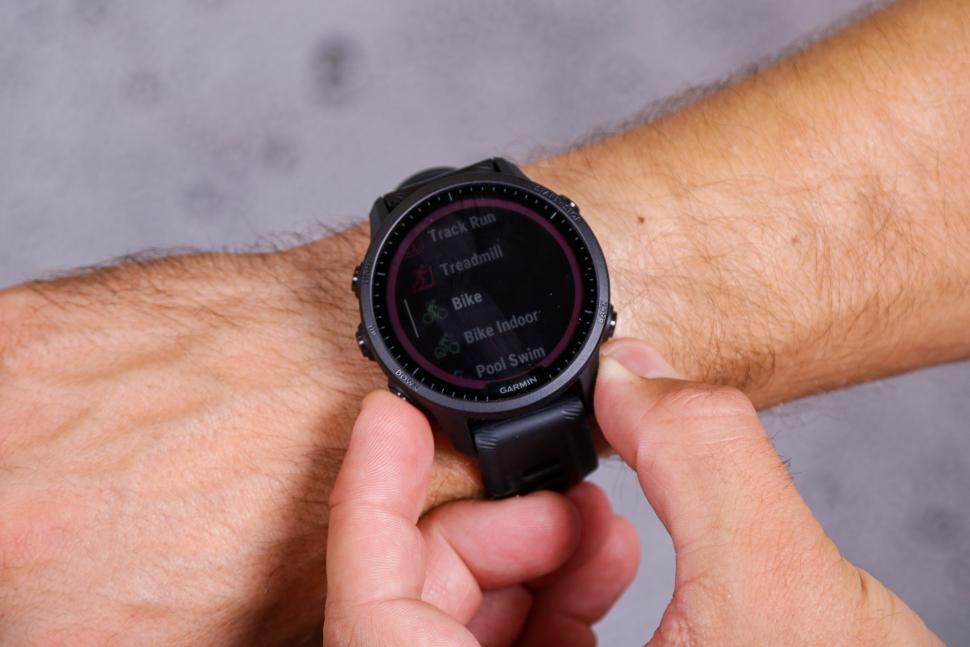












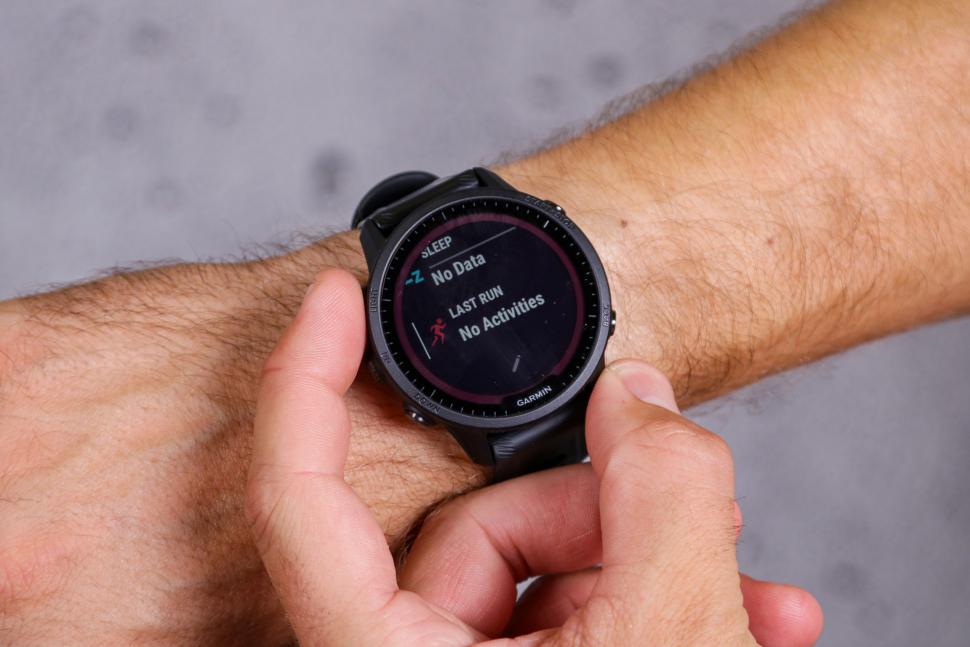
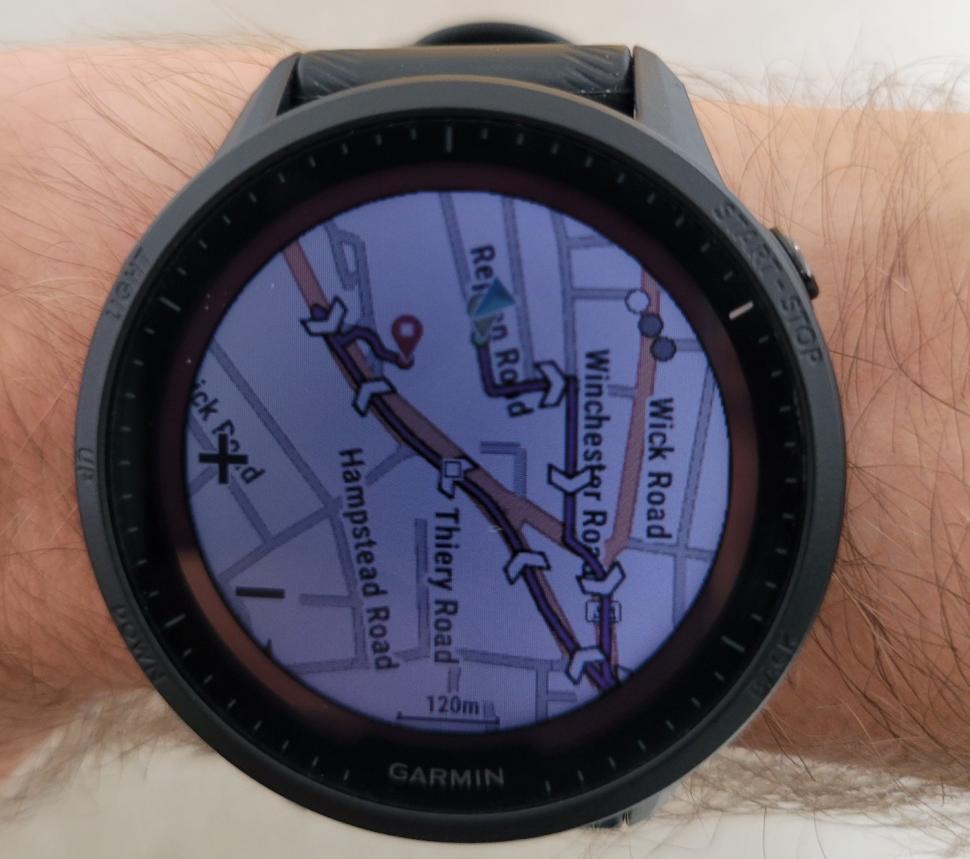
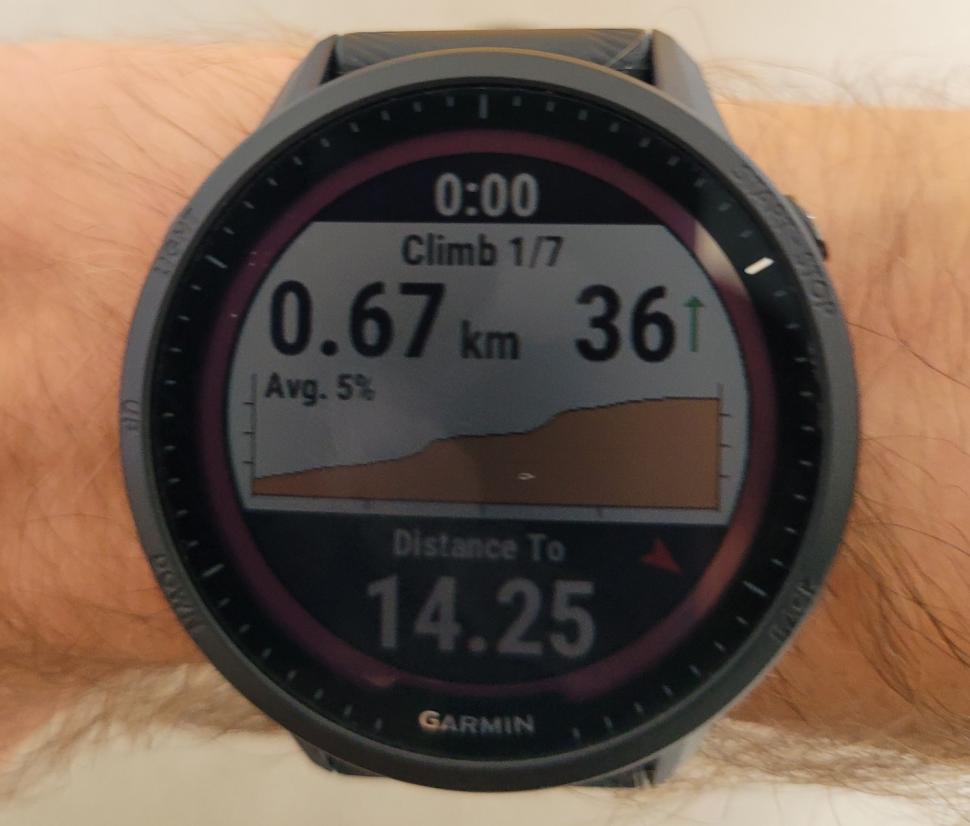
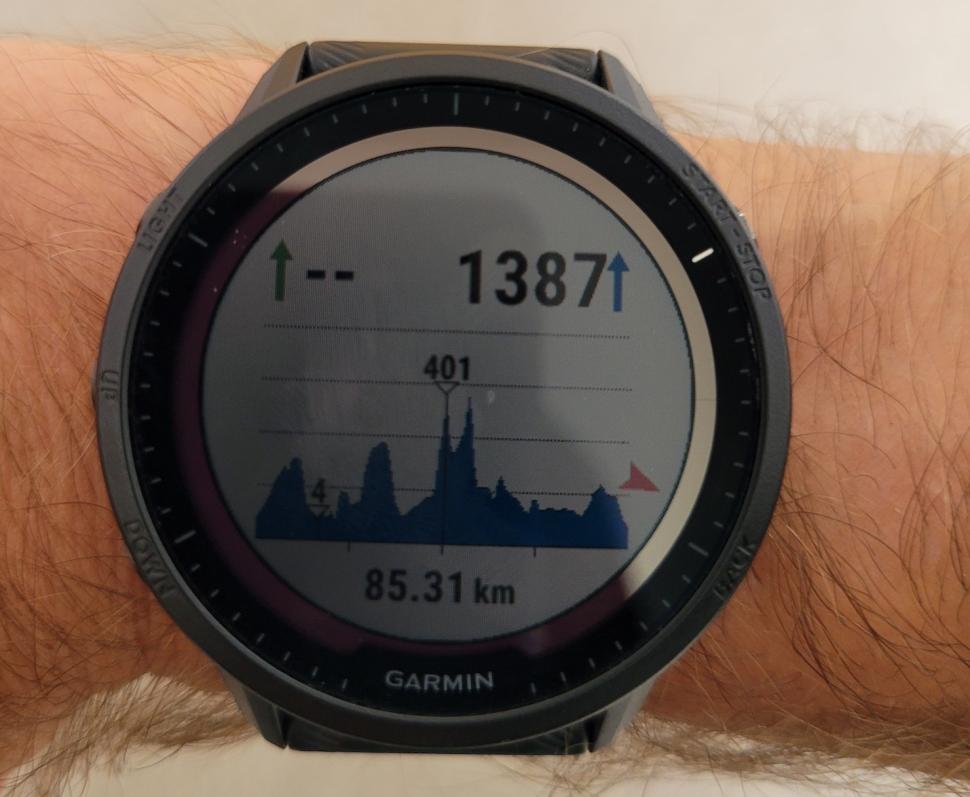
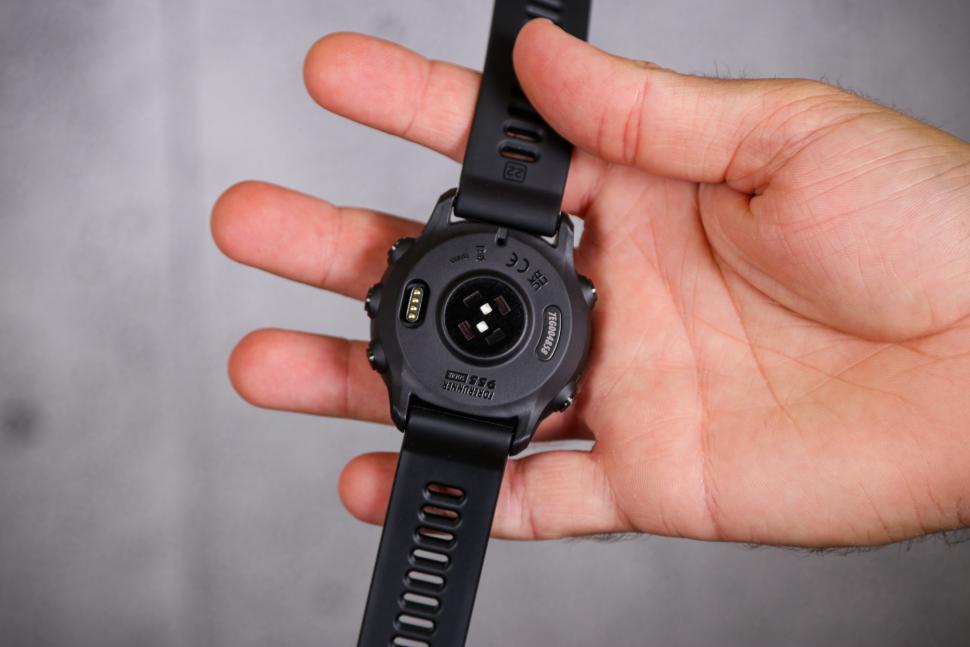
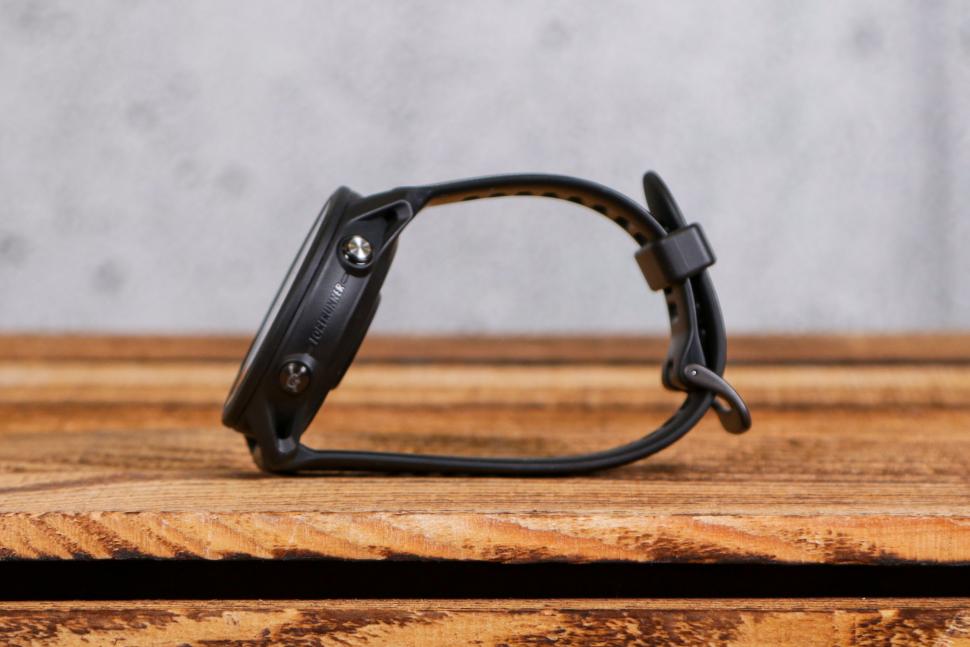
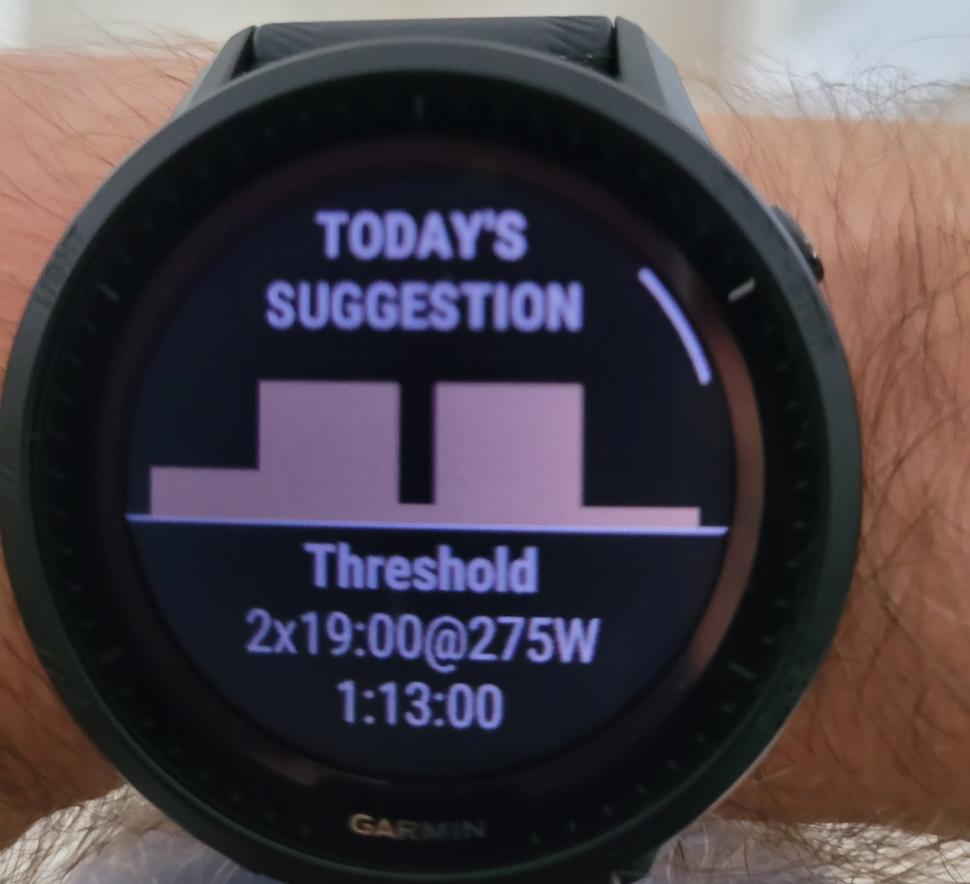
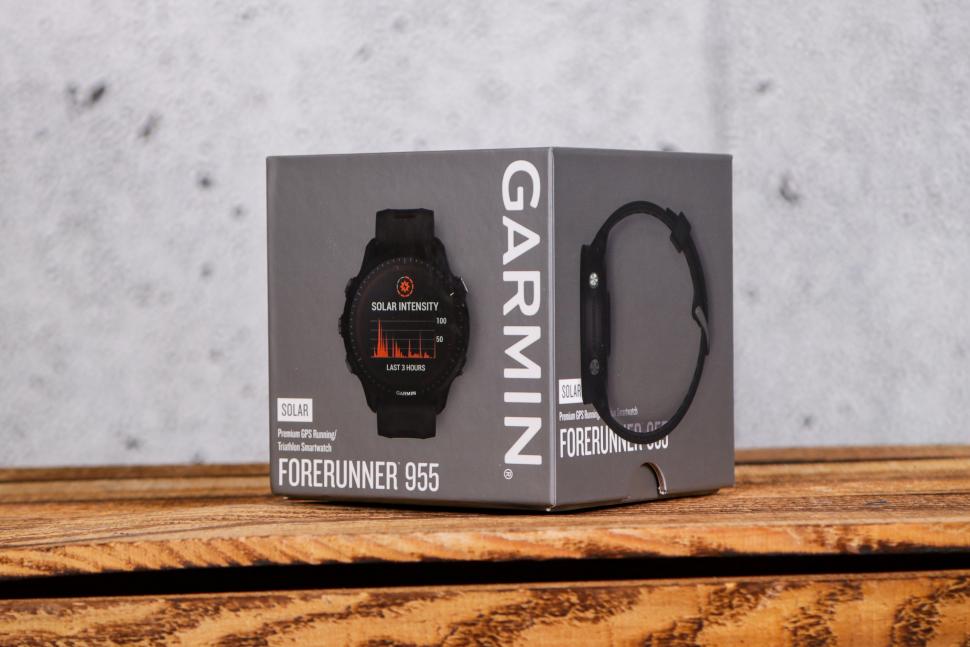
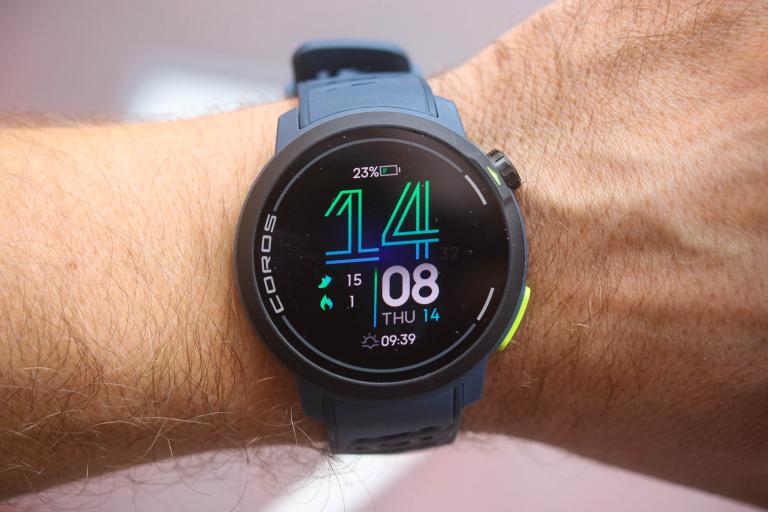
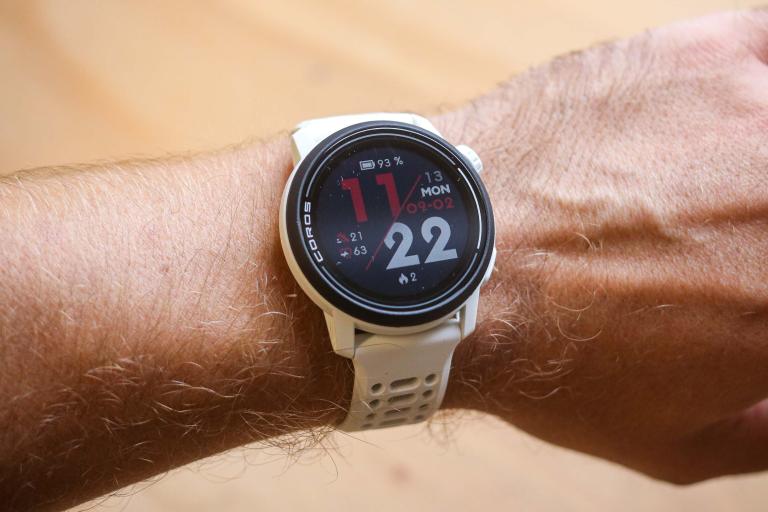
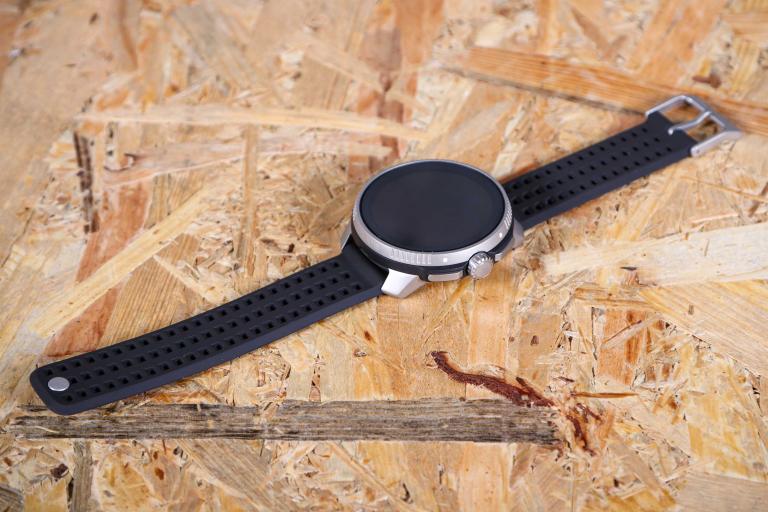
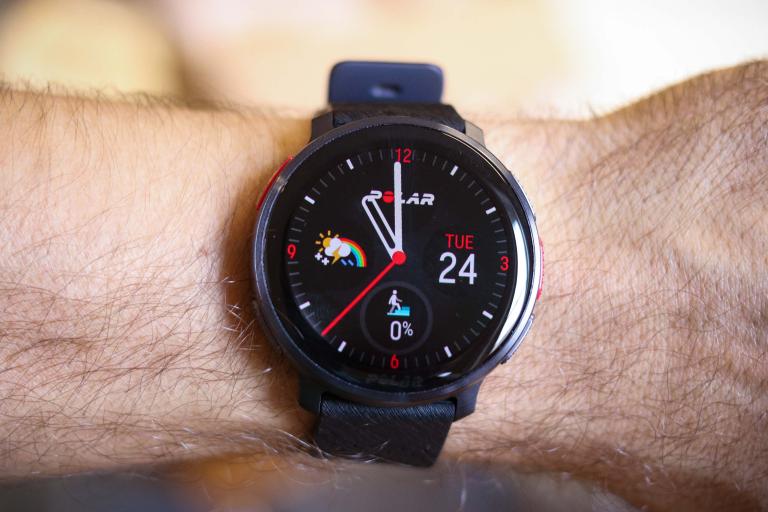
Episode #57: Apparently this is now a scandal to match the Post Office Horizon shenanigans. https://www.bbc.co.uk/news/articles/cn042065g0zo
Car spreading https://climatevisuals.org/carspreading/ https://cleancitiescampaign.org/carspreading
"Welcome to your local Council - you don't have to be a moron to work here, but it really helps if you want to blend in".
Must have done something to upset the Court - a year is a long sentence for killing a cyclist in this day and age. Imagine what she would have got...
So I can choose wisely for my commute, I would like to see this comparison done with a penny fathing and a Ducati Panegali.
Laverack still offer the same machine in a rim brake version so the "disc" is there to differentiate it from its stablemate.
Quite right - get those soapboxes off our roads. As everyone knows, the right place for them is the internet.
It's finally live. Here is the link :...
Where's the motor, joking
The Michelin Power Gravel Adventure might fit your requirements, or the Vittoria Terreno Zero ("tubeless ready" but no reason you couldn't run it...